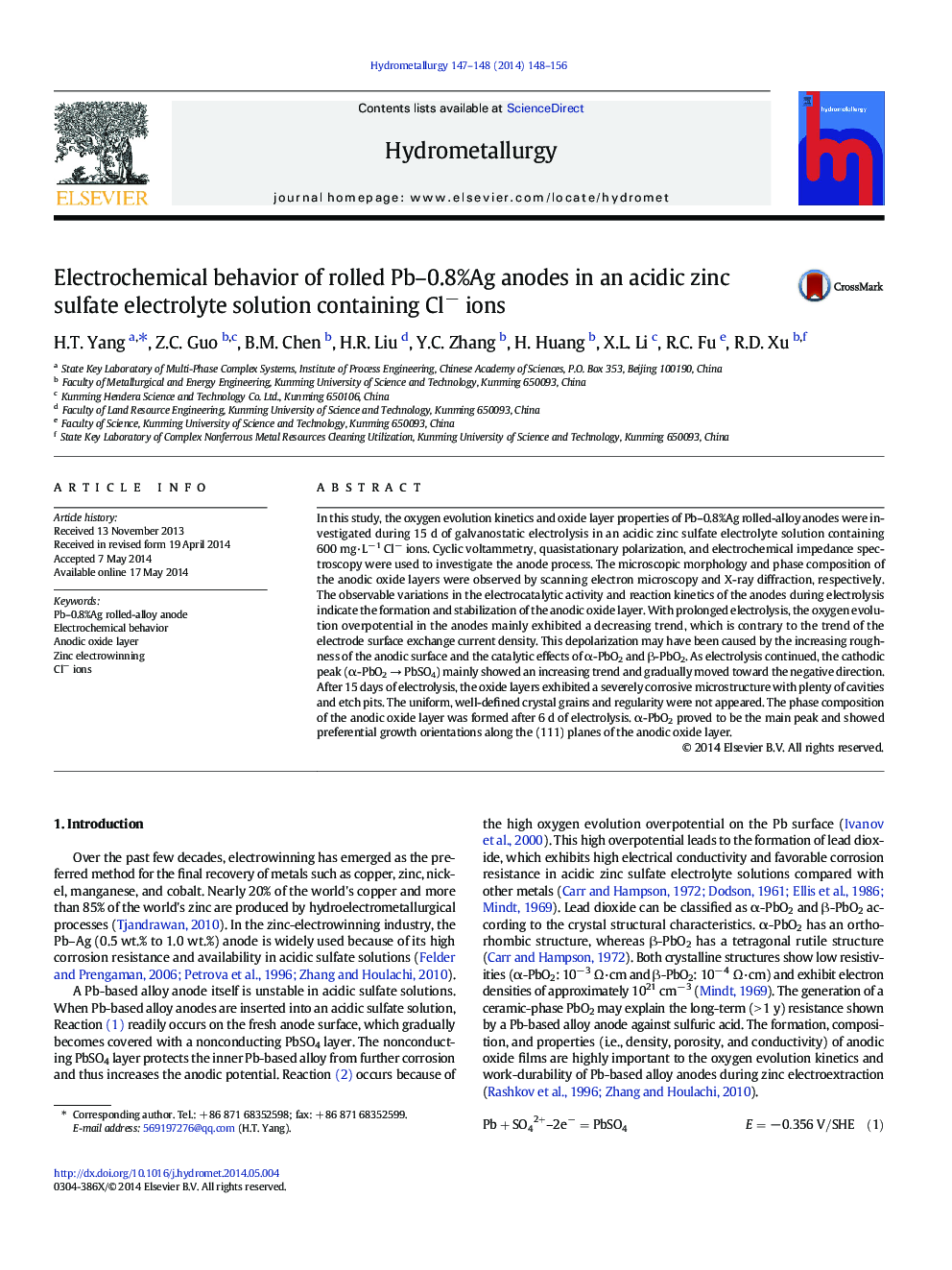| کد مقاله | کد نشریه | سال انتشار | مقاله انگلیسی | نسخه تمام متن |
|---|---|---|---|---|
| 212104 | 462033 | 2014 | 9 صفحه PDF | دانلود رایگان |

• Experiment was performed in long-term electrolysis for 15 days containing Cl- ions.
• The overpotential mainly exhibited a declining trend, whereas J0 a opposite trend.
• The oxide layers exhibited a corroded microstructure with numerous etch pits.
• The uniform, well-defined crystal grains and regularity were not appeared.
• The α(111)-PbO2 proved to be the main peak after 6 d of electrolysis.
In this study, the oxygen evolution kinetics and oxide layer properties of Pb–0.8%Ag rolled-alloy anodes were investigated during 15 d of galvanostatic electrolysis in an acidic zinc sulfate electrolyte solution containing 600 mg·L− 1 Cl− ions. Cyclic voltammetry, quasistationary polarization, and electrochemical impedance spectroscopy were used to investigate the anode process. The microscopic morphology and phase composition of the anodic oxide layers were observed by scanning electron microscopy and X-ray diffraction, respectively. The observable variations in the electrocatalytic activity and reaction kinetics of the anodes during electrolysis indicate the formation and stabilization of the anodic oxide layer. With prolonged electrolysis, the oxygen evolution overpotential in the anodes mainly exhibited a decreasing trend, which is contrary to the trend of the electrode surface exchange current density. This depolarization may have been caused by the increasing roughness of the anodic surface and the catalytic effects of α-PbO2 and β-PbO2. As electrolysis continued, the cathodic peak (α-PbO2 → PbSO4) mainly showed an increasing trend and gradually moved toward the negative direction. After 15 days of electrolysis, the oxide layers exhibited a severely corrosive microstructure with plenty of cavities and etch pits. The uniform, well-defined crystal grains and regularity were not appeared. The phase composition of the anodic oxide layer was formed after 6 d of electrolysis. α-PbO2 proved to be the main peak and showed preferential growth orientations along the (111) planes of the anodic oxide layer.
Journal: Hydrometallurgy - Volumes 147–148, August 2014, Pages 148–156